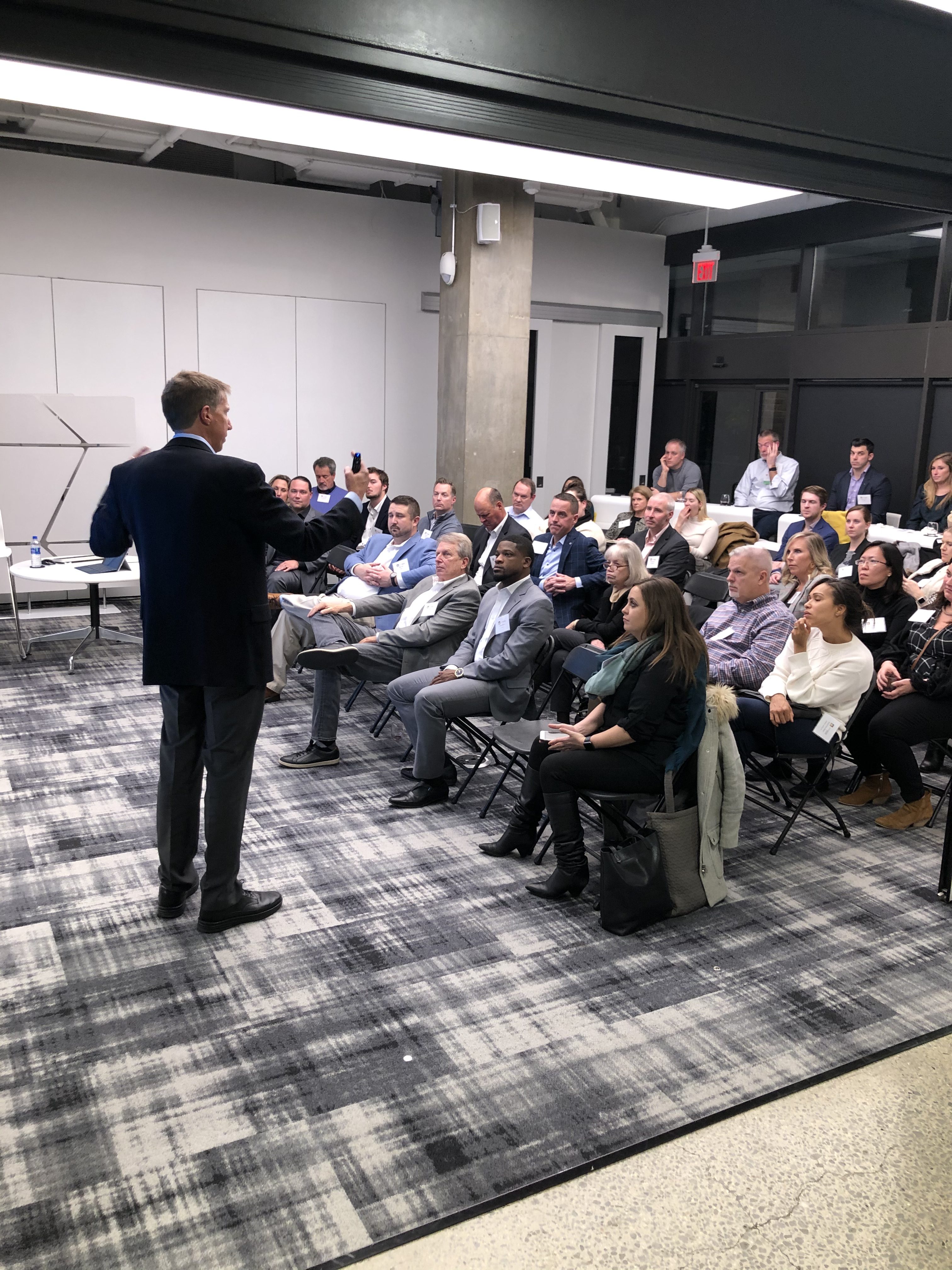Sharing the top three key takeaways from our recent Workplace Acoustics Intervention event presented by Steve Johnson in Washington, D.C.!

Our recent event hosted at FOX Architects was a huge success and we owe it all to our presenter Steve Johnson of ADI Workplace Acoustics and our sponsors, AtlasIED, Price Modern, Haworth, Snowsound (Check out their product profile here!) and Clarity by Nello Wall. If you didn’t get a chance to partake in the conversation, check out the top three things we learned from our Workplace Acoustics Intervention.
The Problem is in the Acoustics
Eighty percent of decision-makers don’t recognize workplace acoustics as an issue. So, first things first, why are acoustics so important to consider in the workplace? To work is to be comfortable enough to focus and stay productive. Based on what we learned,
“Seventy percent of workers report conversational distraction is the biggest impediment to productivity.”
From these distractions, it’s hard to avoid increased error rates, decreased worker satisfaction, and productivity reduction.

Take Advantage of the Acoustical Tool Kit
There’s an acoustical toolkit that can help in solving some of the distractions and lack of private conversations that many seem to have. Like you’re ABC’s, the acoustical toolkit contains Absorption, Blocking, and Covering. These tools allow your workplace to find privacy, less distraction, and overall workplace satisfaction.
Absorption
The perfect absorptive surface is a hole in the wall
The ability of a material to absorb sound is measured by the noise reduction coefficient (NRC). The higher the NRC the higher the absorption. Absorptive materials are used to control reverberant sound in the workplace. Rooms with hard ceilings and glass walls are likely to benefit from added high-NRC materials.
Block
Sound blocking, measured by sound transmission class (STC) and ceiling attenuation class (CAC), work to balance wall ratings and ceiling ratings.
Cover
Cover, a term used for sound masking, allows for artificial or natural sounds to envelop the room to cover the sound of nearby conversations and other typical office noise. The benefits can double the privacy index within the workplace, lower construction costs, ease the shift from offices to workstations, and ease the shift from high panels to low/no panels. Sound masking systems utilize speakers which may be placed in a variety of discreet places within the workplace such as above the ceiling and under the floor.
The Workplace is Changing
Offices are no longer simple cubicles stretched along a hallway, they’re coworking spaces, “neighborhoods”, activity-based and collaborative. With the ever-changing workplace, it’s important to lead the conversation on acoustics to understand who needs what in the workplace whether it be confidentiality or reduced distraction. Set goals for privacy and initiate the conversation early.



